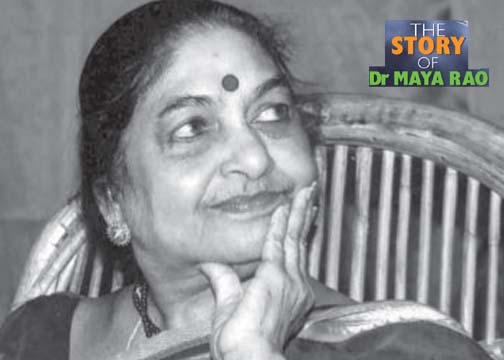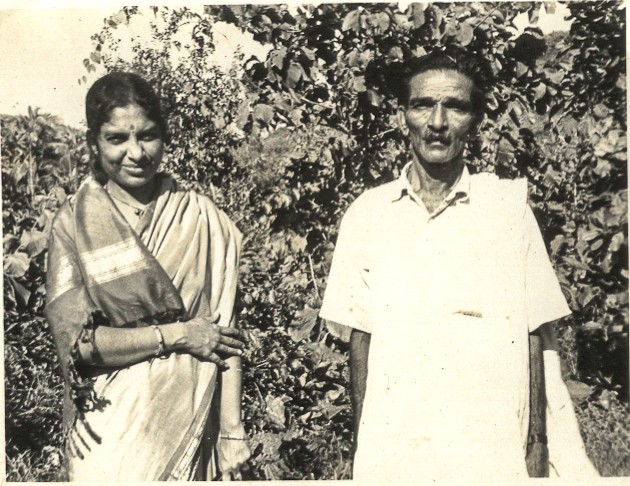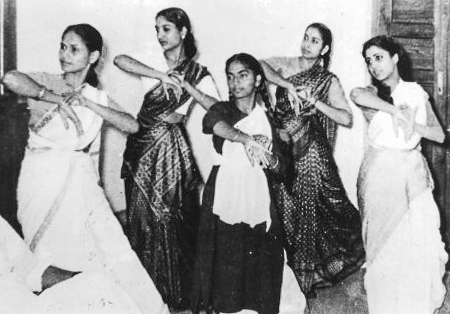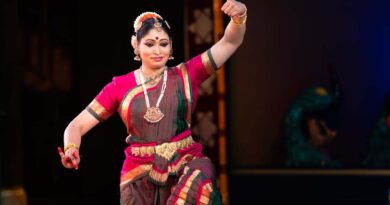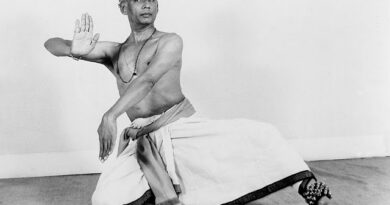The Story of Dr Maya Rao
Text: Chitra Venugopal, sister of Dr Maya Rao
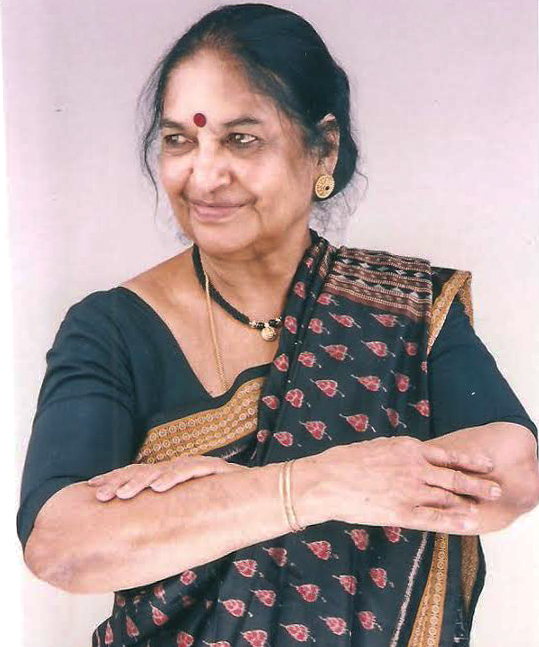
“Sanjiva Villa” is the name of the place where the story begins. A sprawling bungalow opposite Malleswaram railway station, nestled amidst lush green orchards, this was the abode of Hattangady Sanjiva Rao and his wife Lalita Bai (Subhadra). To them was born Maya Rao preceded by Manohar and Ramesh followed by Shivaram, Uma and Chitra. They were amongst the early pioneers who settled in Bangalore and contributed to the welfare of the Saraswat community.
Maya, born after the two elder brothers, was more a tomboy in her youth but gifted with a melodious voice. She showed interest in music and was trained in both vocal and instrumental by Katta Rama Rao. She was nurtured in a family which patronised music and culture. The children were always a part of the many cultural events and programmes featured at the Town Hall.
Maya’s passion for choreography started while she was a student at Kamalabai’s Girls School, where she headed the dance club. Later at college she choreographed lots of one-act dance dramas along with her dancer classmates. Some of these were Art and Life (lyrics by TaRaSu the famous Kannada writer), Seetha Apaharan and Grow More Food. It was on one of the college day programmes, the musicians did not turn up and as providence had it, Nataraj, who had come to accompany some singers, helped her out with the music as he had top vidvans in his Saraswathi orchestra. They later collaborated and started the Natya Saraswathi, the school of dance.
The entry of Udaya Shankar and Ramgopal in Bangalore scenario was the starting point of Maya’s journey in dance. Sohanlal, who performed in Ramgopal’s troupe was an impressive Kathak dancer. My father was fascinated by him and he decided to engage Sohanlal as a tutor for his daughters.
Her ambition to pursue dance as a profession took her to Jaipur, where she wanted to specialise in Kathak. But she found that all the Kathak Gurus had moved out of Rajasthan to seek new avenues. Hence she went to Ceylon, where her brother Manohar introduced her to Chitra Sena, an exponent of Kandyan dance. In 1954, she was selected by the Government of India, New Delhi, for a scholarship to learn and research in Kathak. She was under the tutelage of Gurus Shambhu Maharaj and Sunder Prasad. A research facility was available in Sangeet Natak Akademi. Incidentally, she was the first South Indian to receive this scholarship.
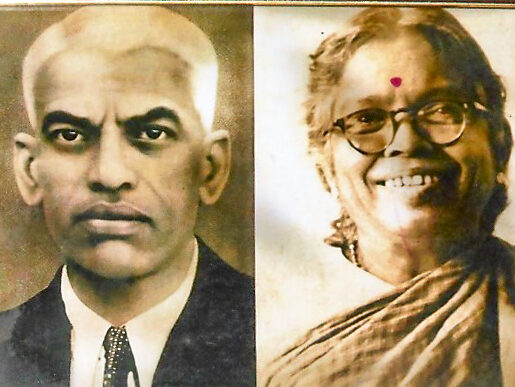
The turning point in her life commenced when she was selected to specialise in ballet and choreography in Moscow, Soviet Union. She came back to India in 1964 and established her dance school ‘Natya Institute of Kathak and Choreography’ in New Delhi under the guidance and help of Smt. Kamaladevi Chattopadhyay. The school was moved to Bangalore in 1987 as the Late Shri Ramakrishna Hegde was keen to have it here as Maya was from Karnataka.
Maya was given the charge to conduct the SAARC dance festival, organised by the Government of Karnataka, for the SAARC summit. Seeing her ability as an organiser, she was made the chairman of the Sangeetha Nritya Academy. She started for the first time the dance festivals at all the Heritage Tourist places in Karnataka. Though she was based out of New Delhi for 25 years, Maya was connected with Karnataka state. She choreographed ballets like Hoysala Vaibhava, Ramayana Darshan by Kuvempu, and Basaveshwara, to name a few before she shifted to Bangalore.
Maya rose to greater heights producing historic Sanskrit and contemporary ballets. The school also continued diploma and degree courses in dance and choreography and is now affiliated to Bangalore University. Maya earned several laurels including gold medal at the dance festival in Helsinki, Sangeet Natak Academy award in 1987, Shantala award, Tagore award, Karnataka Rajyotsava award, Kala Shri award, HRDA emeritus and a doctorate from Bangalore University.
Maya has trained and produced talented artistes who are well established in India and abroad propagating Kathak and establishing their own schools. This had been her passion and ambition of handing over the baton to the younger generation to keep the flame burning. Her daughter, Madhu Nataraj, has now taken over responsibilities as director.
Her last ballet before she departed from this world, was “Kathak through the Ages”, which was very dear to her heart. It was in 2014 during the 50th year of Natya Institute. . Three weeks later, she left this world for a heavenly abode.
To Maya, teaching dance was a sadhana and as a guru, she spared no pains in passing on her knowledge to her devoted disciples in the true Gurukula tradition.
That is the story of Dr Maya Rao.
*****
Guru Maya Rao: A Teacher, Administrator and Educator Text: Sai Venkatesh
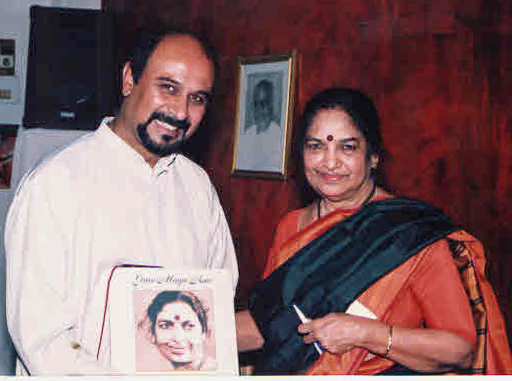
I met Dr Maya Rao in 1984, during the first dance workshop conducted in Karnataka. Later, I went to Delhi for a 3-year diploma in dance choreography under Dr Maya Rao at Natya Institute of Choreography (NIC). The institute shifted to Bangalore in 1987 and I worked as a manager of Natya Institute of Kathak and Choreography (NIKC) for more than 25 years with Maya didi.
Guru Dr Maya Rao started her life as an English teacher, but destiny had other plans. Blessed by Lord Nataraja, she became a world-renowned dance teacher, choreographer and a professional in presentation and preparation. Her dream to promote Kathak and choreography made her start an institution in New Delhi, to impart professional training to professional dancers. Natya Institute of Choreography (NIC) started in 1964 was filled by dancers from all over the globe. Her in-depth knowledge on Natya Shastra, world history on dance, Indian dance forms, and folk forms attracted lots of dancers.
Dancers from Manipur, Andhra Pradesh, Karnataka, Jammu and Kashmir, Delhi, Tamil Nadu and other parts of India also joined the institute including Chaotombi Singh from Manipur, Bansilal Dogra from Jammu Kashmir, Deepti Gupta from Canada, Dorothy from New York, Helen Acharya from Delhi, Nassif Anna from USA, Nayana More and Vijaya Marthanda from Karnataka, Raja Radha Reddy from Andhra Pradesh, Prakash Yeddegudde from UK, Satyanarayan Charkha from USA, and Sonar Chand from Manipur.
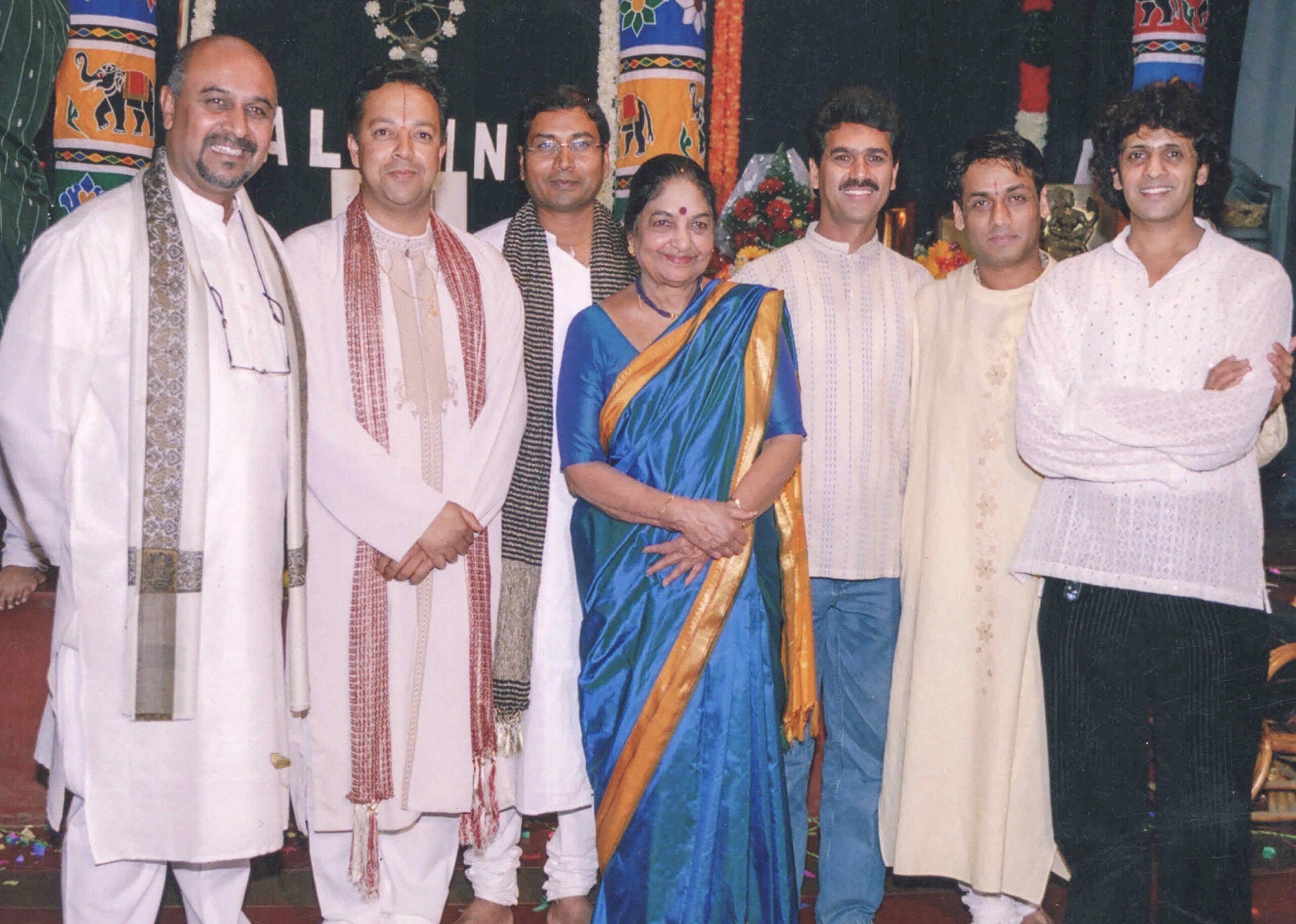
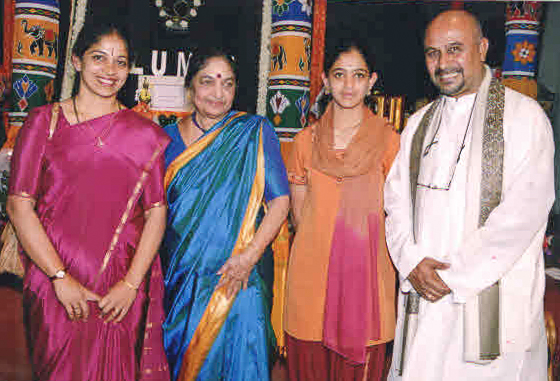
Natya Institute of Kathak and Choreography (NIKC) started in 1987, in Bangalore, Karnataka, and for the first time a kathak and choreography institute was established in southern India. Maya didi trained numerous dancers both in Kathak and choreography, at NIKC, a body affiliated with the Bangalore University. Dancers received bachelor degree in choreography. She had a vision that all graduates would get jobs and stand up as professionals to do more research work and establish themselves at national and international levels. Maya didi started the performing unit which travelled and presented both Kathak and choreographic works in the form of dance features or dance dramas or dance ballets all over the world, Maya didi’s interest to present, promote our art and culture started in 1947 with the establishment of “Natya Saraswathi Dance and Music Centre” along with her scholarly husband MS Nataraj, a musicologist, who played both string and wind instruments. A big team of musicians and dancers joined together to present small dance themes, social, historical and mythological. The troupe travelled all over the country.
A visionary, with utmost professional calibre, Maya didi attracted many dancers from all over the world, and worked with reputed dance choreographers in India and abroad. Her home or institute created this atmosphere and a relationship that lasted long.
Dr Maya Rao: Guru Par Excellence Text: Vijaya Marthanda
It was a day in June 1969 when I was awaiting my B.A. final results that Maya didi visited us. During our conversation, she casually asked me about my next career move after graduation. Like everyone else, I expressed my interest in Masters, of course with my dance practice on. She paused for a while and suggested that I take up a 3-year diploma in choreography training at Delhi on Mysore State Academy Scholarship. I jumped at the idea and saw my father’s illuminated face of approval.

Instantly, Natumama, as we fondly called MS Natraj, invited me to join the Mysore state cultural troupe travelling to Jammu & Kashmir and Haryana to perform Bharatanatyam and later to join the Natya Institute of Choreography course at New Delhi. After a successful tour, my training period started in Delhi. As I watched my seniors dancing, composing and directing, I was shaken a bit. But Maya didi, who watched my expressions, convinced me that everybody goes through this phase. Soon with her guidance, I started my work at a slow pace. But I picked up the thread of creative work with the guidance of illustrious teachers like Maya didi teaching the Art of Choreography, Sri Anil Biswas for Mood & Dance music, Sri. Habib Tanvir and Smt. Monica Misra Tanvir on theatre, mime and movement, and Sri. Inder Razdan on stage settings, who instilled the knowledge of allied arts on choreography. Whatever the creative work or idea I think of, I owe it to my wonderful teachers.
Some of my unforgettable experiences at the Natya Institute were Maya didi’s ballet productions like Ramayana Darshana for Kuvempu’s Jnanpith Prashathi at Vigyan Bhawan, New Delhi. Anilda, who scored the music for the ballet, began singing which was so divine that it brought tears in our eyes before entering the stage. The music lingers in my ears even to this day. Next was our performance Hoysalavaibhava, inside the Belur temple, where the Hoysala queen Rani Shantala Devi used to dance. We were all in tears throughout the performance and felt like we were in heaven. Likewise, Maya didi’s ballet productions went on with the Vision of Amir Khusro, Pulikeshi, Basaveshwara, Venkateswara Vaibhava and so on.
The institute’s production of contemporary ballets like Miss Bottle, Jawan, Ateet Vartaman, had its own flavour. I must say I was very fortunate to be a part of all these ballets. Apart from this, we had a novel experience of mingling with artists from other states and getting to know about their regional dances. It was Maya didi’s maiden effort to bring in all the elements of a traditional theatre through the Sanskrit ballet productions by the students. The Poorvarang and Asaarita interpretation were regional. We learnt a lot and it was an awesome experience which I cherish even today. It was Maya didi who introduced dance theory and stressed that dancers should study theory, to create and practice while composing and choreographing new ballets.
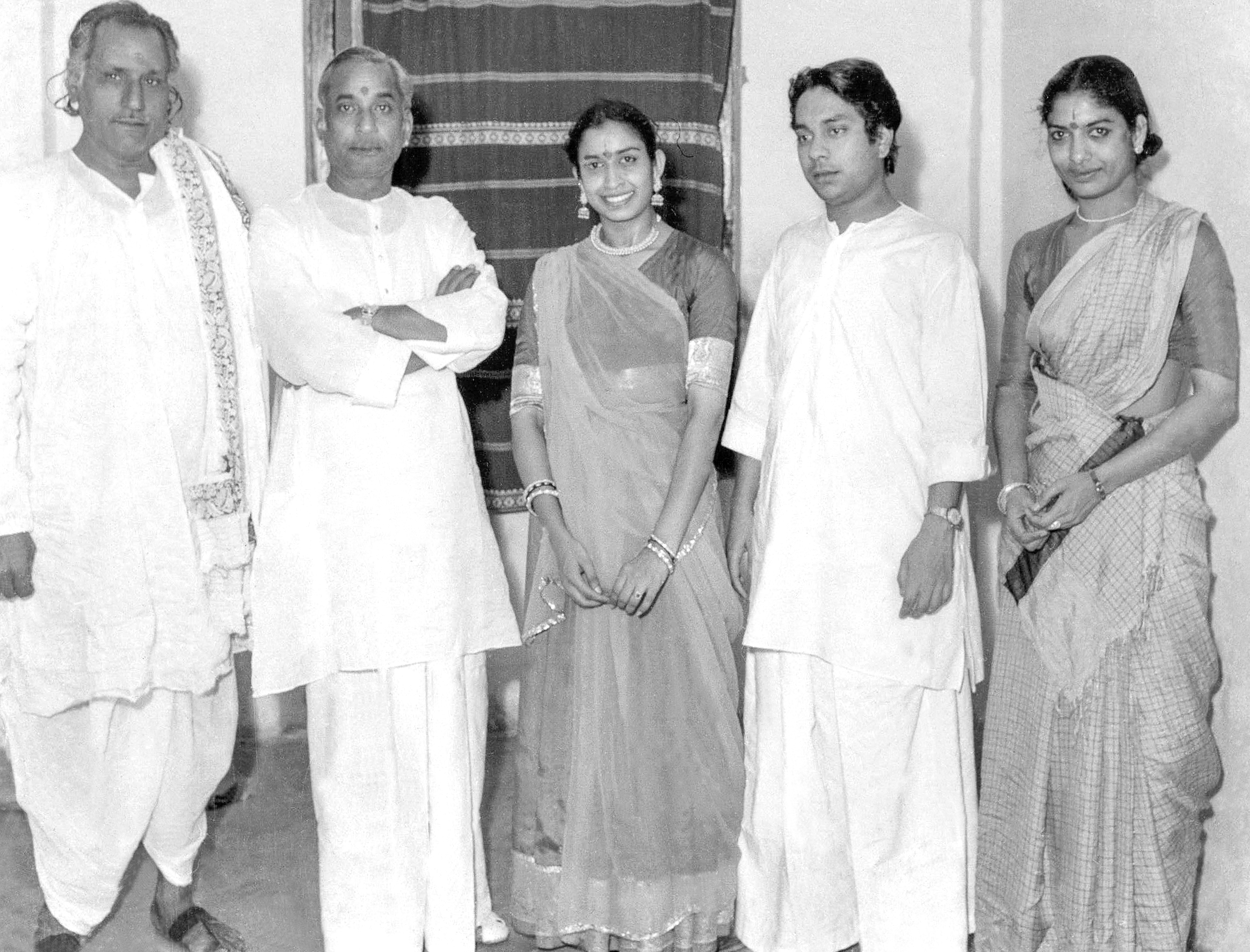
Having associated with her for three to four decades, I had the opportunity to share and learn a lot at the institute. She guided me at every stage — in theory, huge productions on grants from the HRD ministry, research projects and dance school productions. She made me interact with many veteran artists, scholars and diplomats of the country and outside during my tenure at the institute. I had the privilege of being a member of her troupe which visited foreign countries on cultural exchange programs through ICCR.
Indeed it was a sublime experience and profound learning in every way during my association with the legendary Maya Didi. I hope that her blessings continue in all my endeavours in future.
*****
Beloved Guru Dr Maya Rao Text: Keremane Shivananda Hegde, Yakshagana Artiste, Guru, Director, and Choreographer.
I cherish the memory of attending the birthday celebration of gracious Guru Dr Maya Rao, our dear most ‘Didi’. It was a Friday morning on May 2, 2014. Didi was stepping into her 86th year. Many of her students, followers, well-wishers and eminent personalities like Vimala Rangachar, R Ganesh, Veena Murti, Ashish Khokar and many more had gathered to celebrate the auspicious function.
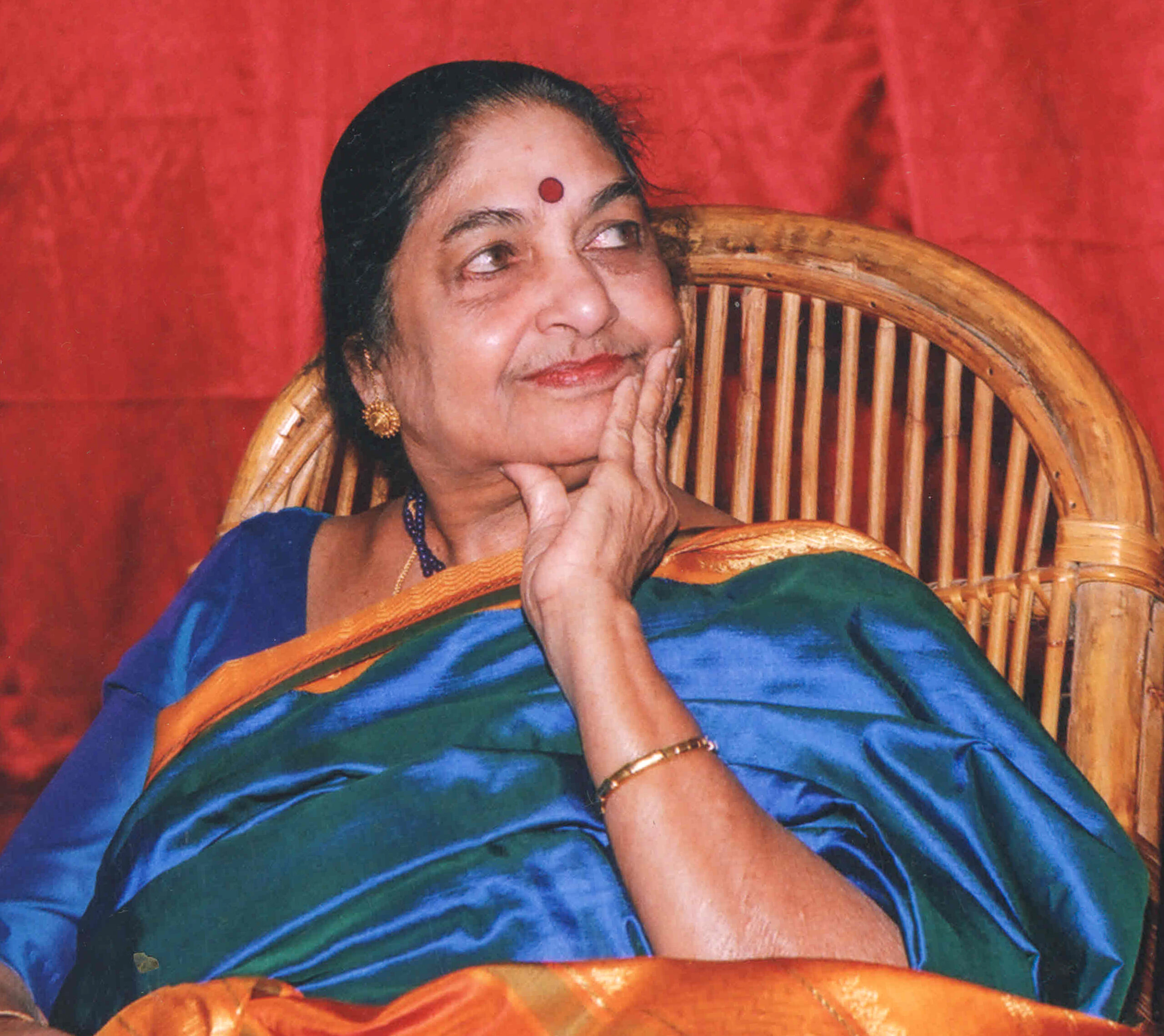
Students had arranged a screening of a documentary on the glimpses of her art journey. As she entered the institute, as usual, she was welcomed with warm birthday greetings by all of us which was a surprise to her. A person who followed the mantra of simple living and high thinking, a person who breathed dance in every moment of her life, as she entered, she appeared to be ‘Natya Saraswathi, personified.
The gathering had an opportunity to chat with her. Madhu Nataraj, didi’s daughter, who is a well-known Kathak and contemporary dancer herself, asked her mother, “Which art form you like most apart from Kathak?” Didi answered immediately and said, “Yakshagana” with a smile on her face. We were thrilled by her reply. She, being an ardent student of Kathak maestro Shambhu Maharaj, being the first to venture out of India to learn choreography in USSR, being a guru and inspiration to world-renowned artistes (Keremane Shambhu Hegde, Raja, Radha Reddy, Sonarchand, Choutambi Singh, Satyanarayana Charaka and many more) and one who has studied extensively, dancers of the world and one who designed and implemented choreography course for the first time in India, expressing her utmost love to Yakshagana made all of us immensely happy and proud.

Guru Dr Maya Rao’s love for Yakshagana is not something recent. And it goes beyond just love. The depth at which she connected and understood the art form was amazing. Destiny brought together, Guru Maya Rao and MS Natarajan, an established renowned musician and composer, who managed a troupe Saraswathi Orchestra (later became Natya Saraswathi) and was touring all over the country since 1947. They used to take Yakshagana and other folk artistes along with them. Upon her return from Russia in 1964, with the help of Kamaladevi Chattopadhyay, the then vice-chairperson of Sangeet Natak Akademi, she started the Natya Institute of Choreography in Delhi under the aegis of the ‘Bharatiya Natya Sangh’. Keeping New Delhi as the centre of her activities, Maya Rao and Natarajan created a lot of opportunities to the artistes of Karnataka especially Yakshagana. Whenever they visited Karnataka, they interacted with eminent Yakshagana artists like Bannada Maalinga, Keremane Shivarama Hegde, Bannada Kuttiyappu, Guru Veerabhadra Naik, Kushtha Ganiga, Kokkarne Narasimha Kamti to name a few. Documentation of the art and exposure of the artistes to a wider audience (which included artistes from other art forms) was always an important part of her work. She called Bannada Kuttiyappu to Delhi and arranged a lecture demonstration on Yakshagana. She also arranged the first ever full-fledged performance of Yakshagana and invited our troupe to Idagunji Mela at Sapru House, New Delhi in 1968. It was the act (Prasanga) of ‘Karna Parva’ and Jarasandha Vadha for Doordarshan, encapsulating the various traditional aspects of the form such as song, dance and drama. People of Delhi for the first time relished every moment of this accomplishment. Thus, this became a historical event in the journey of Yakshagana. It is not an exaggeration to say Dr Maya Rao was the first women from Karnataka who worked towards popularising Yakshagana outside of the state and beyond. Kamaladevi Chattopadhyay’s blessings and help towards this end made Dr Maya Rao convert her vision to reality.
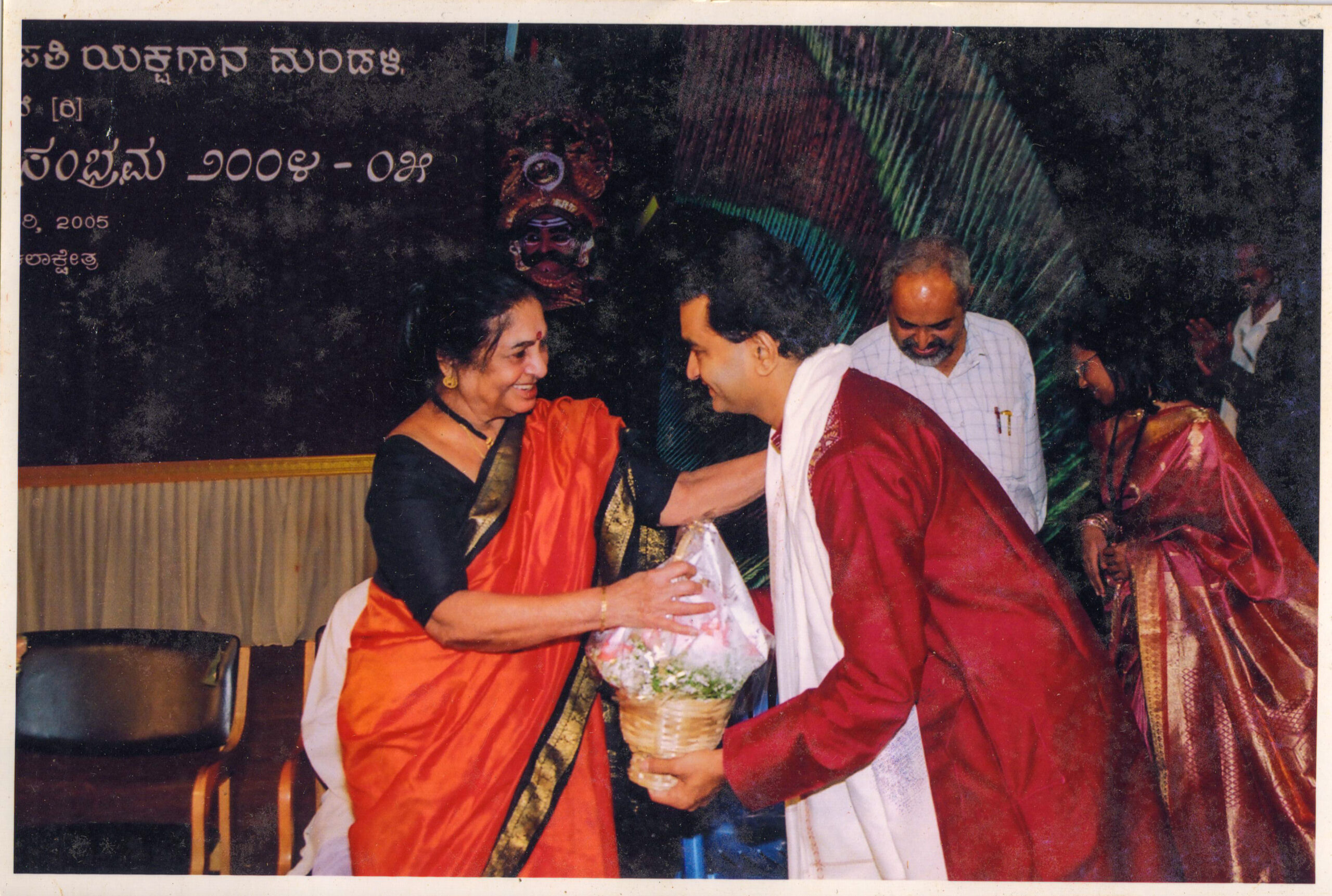
Yakshagana always had an important place in most of her choreographies and performances not only in India but also abroad. There always used to be a pupil from Yakshagana in her choreography institute and she always used to be proud of this fact. Keremane Shambhu Hegde, my beloved father, was the first student from Karnataka to train under her guidance and he was also part of the first batch of the choreography course designed by her. Didi treated him like her own family member and for my father, she was a second mother throughout his life.
Maya Rao always respected Yakshagana in its traditional form. She opposed crafting, grafting and mixing of other dance forms. However, she encouraged creativity that added value to the tradition. She expected that all her students adhered to this basic principle while working and improvising with any art form. Didi never used to discriminate between the art forms. Nor did she have any hatred, jealousy or ignorance towards anyone. Rather she interestingly understood the potential and looked at the creative possibilities of art forms, appreciating and respecting the culture and tradition.

She had great care regarding the growth and development of Yakshagana. She did not like populist meaningless approach to attract the audience. And was a severe critic of unhealthy gimmicks used in Rangbhumi. Despite being at a distant city like Delhi she always kept in touch with the artistes of Yakshagana in Bangalore and was updated about the state of Yakshagana starting from the bayalatas (open field play) to the tent troupes in the villages and also other experimental performances of Yakshagana including those of Dr Shivaram Karant. There was always a reference to Yakshagana in whatever she did – Seminars, workshops, speeches, writings, cultural delegations, etc. She had the vision of both scholar and a performer simultaneously. We feel proud and happy to acknowledge that Guru Dr Maya Rao was a Queen of Kathak and choreography – a walking encyclopaedia of many art forms.
I was fortunate to have a close association with Maya didi since 1985. It was a time when I was in Delhi, my batch mates and myself, all of us were scared of her. But it was only in the classroom. She was like a mother to all of us outside the classroom. Her affection for the students was invaluable. This can be seen throughout her life in her utmost devotion towards the betterment of her pupils. Nevertheless, she did not compromise with the discipline and quality of learning in her lessons. Once when her best and favourite students, my father, and Satyanarayana Charaka, arrived late to the choreography exam by two minutes, she did not allow them to appear for the exam and they had to retake the choreography exam. Once I enacted Rama’s role in the famous Ram Leela at Delhi Ramaleela ground till midnight and attended her classes the next morning. I dozed off in the class and didi sprinkled water on my face to wake me up.
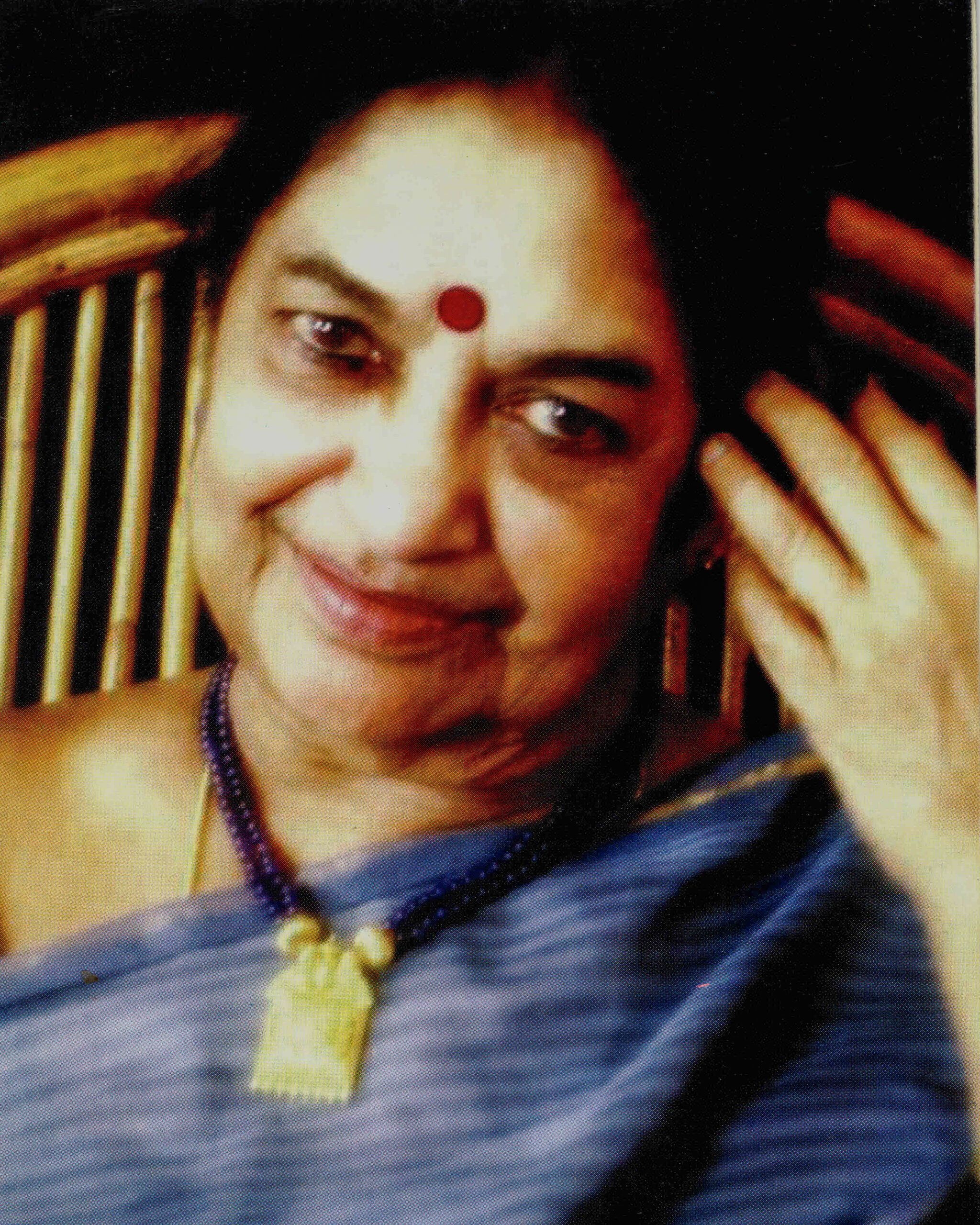
Didi admired my role of Amir Khusro during the Kathak festival in Lucknow in 1986. She introduced me to a lot of performers, scholars and dignitaries as an upcoming Yakshagana artiste and son of Shambhu Hegde. I am blessed with a thousand such proud moments. The saying “Vajradapi Kathoraani Mrudooni Kusumaadapi” (The heart of the holy and noble souls is harder than a diamond and softer than flower) takes meaning when we look at personalities like her.
It was the blessings of Maya Didi on my father and myself that made us develop Yakshagana. In fact, we learnt the art of bringing changes and innovation within the framework by adhering to its tradition from her. Her support and guidance enabled us to keep purity, loyalty, ethics in our profession and other paraphernalia of Yakshagana such as stage direction, stage techniques and choreography.
She opened our eyes to visualise the beauty of various art forms. She taught how to appreciate them sincerely. Her primary lesson was that art is greater than the individual (artiste) and she illustrated this at every step of her life. She wrote a new chapter in Indian art arena by bridging and bringing harmony among different art forms. I think this is one of her greatest contributions to the world of art. Her immense efforts in upholding the essence of the arts, her simplicity, stage discipline, no compromising with the quality of practice and productions, appreciating traditions, deep knowledge and experience working with art and artists, farsightedness makes her and her work comparable to the depth and width of an ocean.
Maya Didi gave us eyes to see the beauty in art and hearts to love them. She stands as an ever shining lamp in the hearts of millions of art lovers. She may not be with us today physically but her spirit lives in our hearts forever.
*****
My Memorable Journey in Life with Dr Maya Rao Text: Nayana S Moray, Bharatanatyam, Kathak, Kuchipudi and Odissi Artiste
At the age of 15 years, the Karnataka government offered me a scholarship to further specialise in dance, at which point I had the privilege of being selected by Dr Maya Rao for an advanced course in Kathak and Choreography at her institute in New Delhi. With this, my journey in life with Dr Maya Rao began and lasted for about five decades. In this long journey of five decades, I gained knowledge and shared a memorable loving bond with Guru Maya Rao which left a great void in my life today.
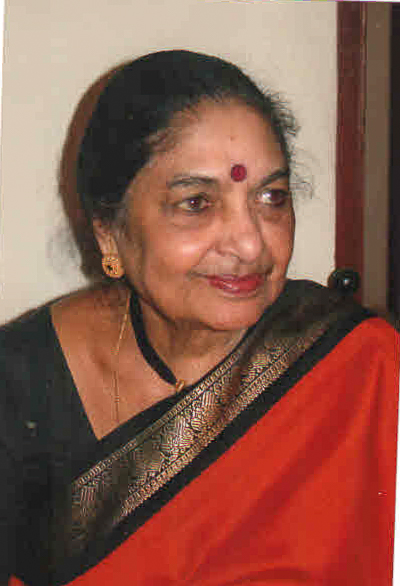
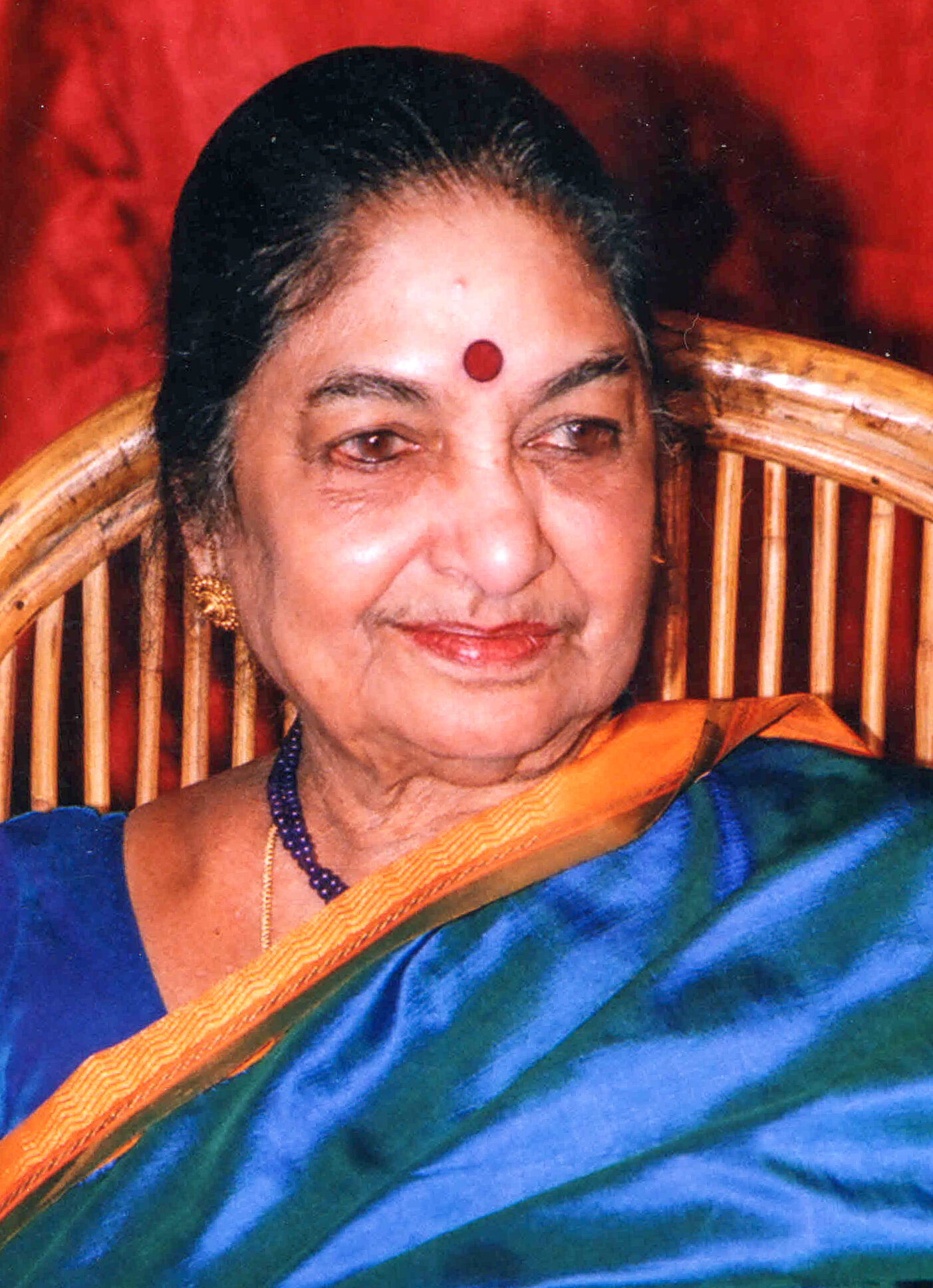
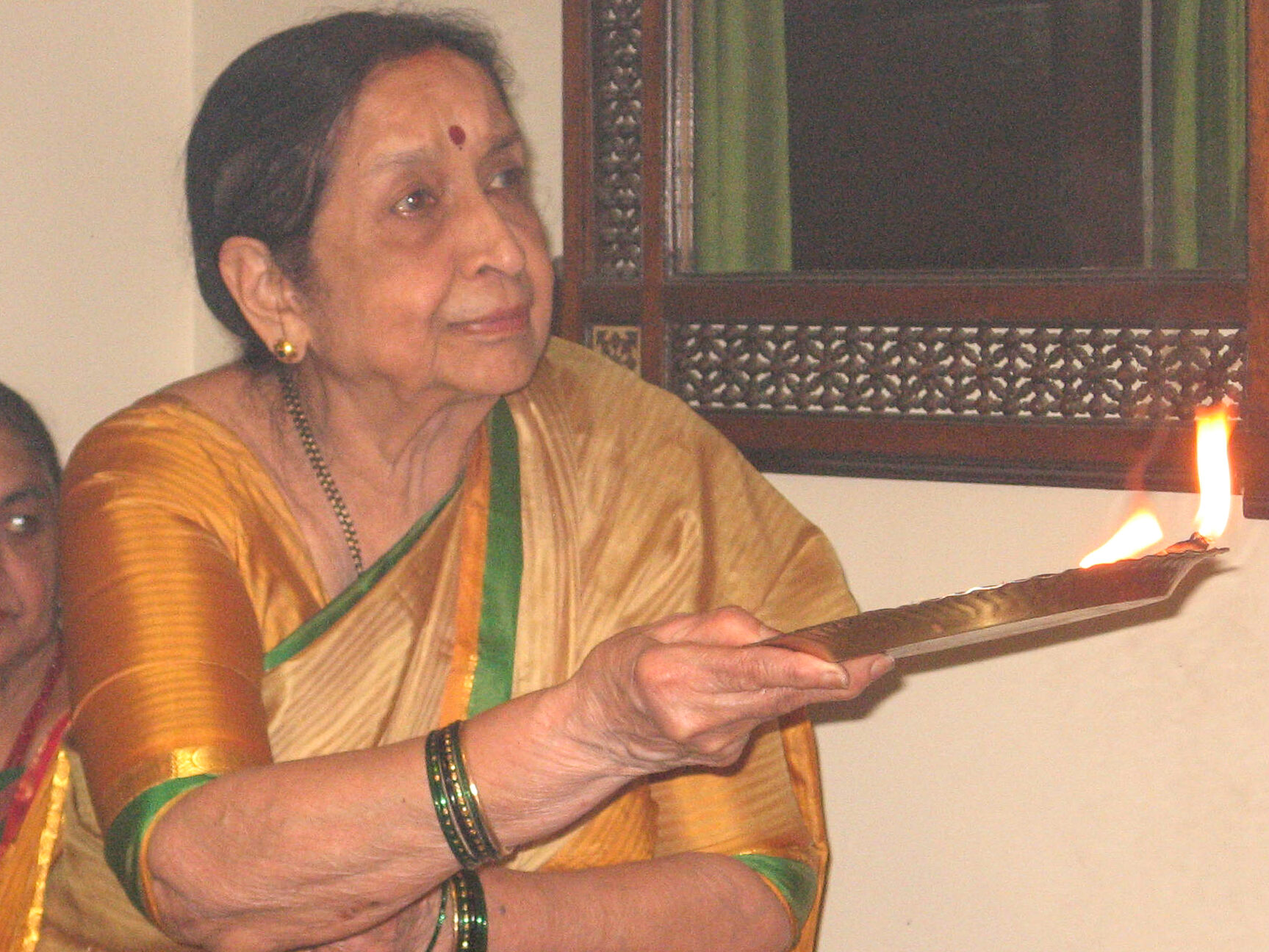
I was the first scholarship candidate from Karnataka for this course and I completed it with distinction. I went to become the principal at the Natya College of Kathak and Choreography, Bangalore founded by Dr Maya Rao.
Throughout these five decades of association with Dr Maya Rao, I have earned a special place in her heart with dedicated hard work and perseverance. I performed in the lead roles in Maya ji’s major ballets like Hoysala Vaibhava and Basaveshwara to name a few. I travelled and performed across India and even overseas with Dr Maya Rao and earned great applause.

